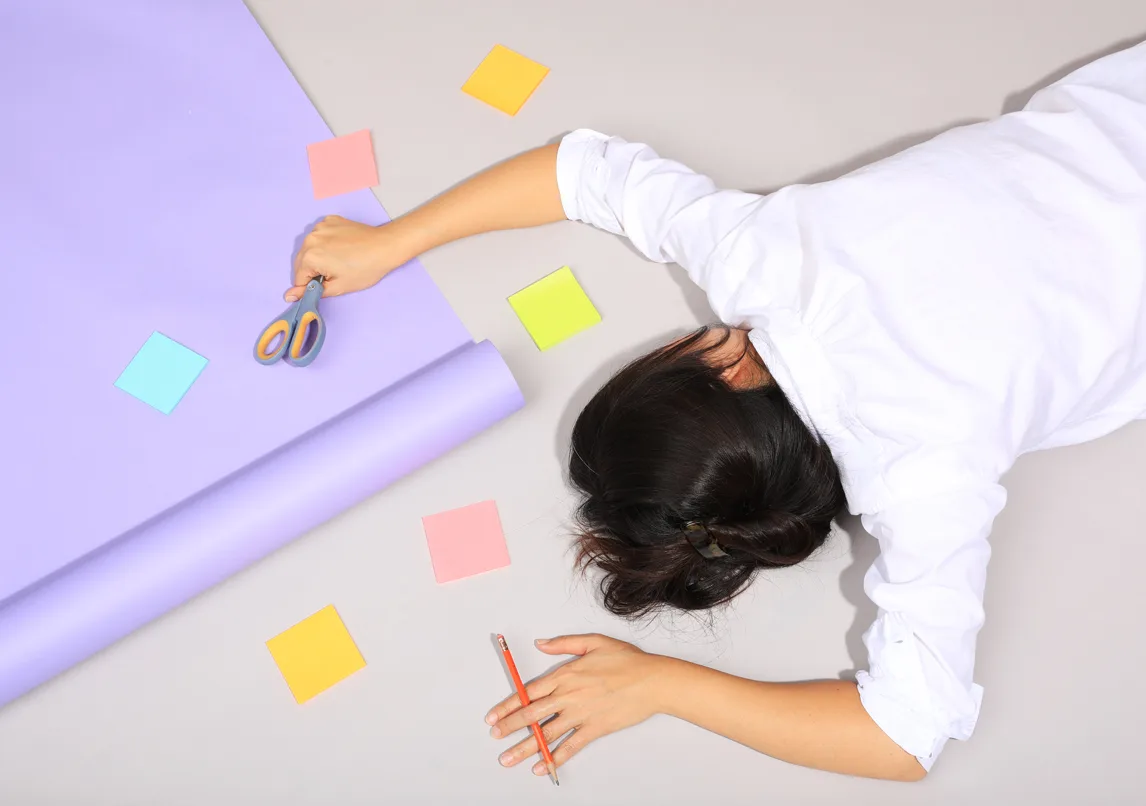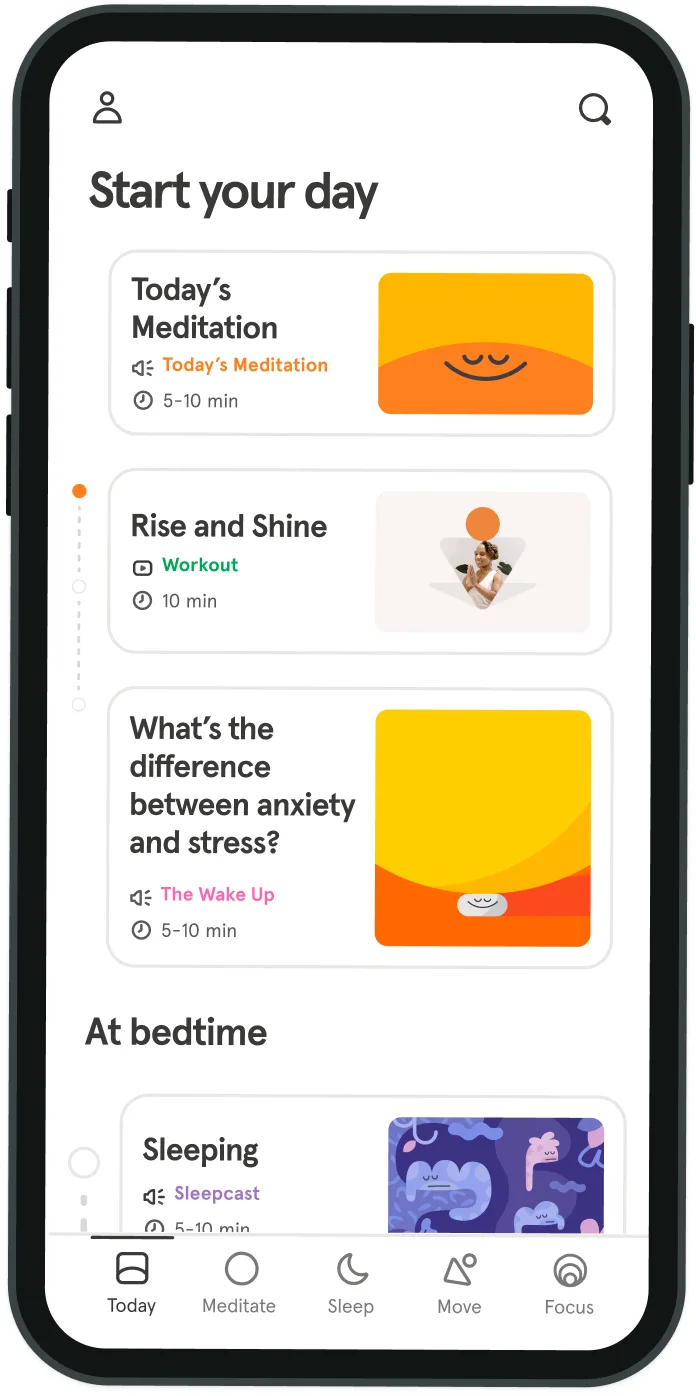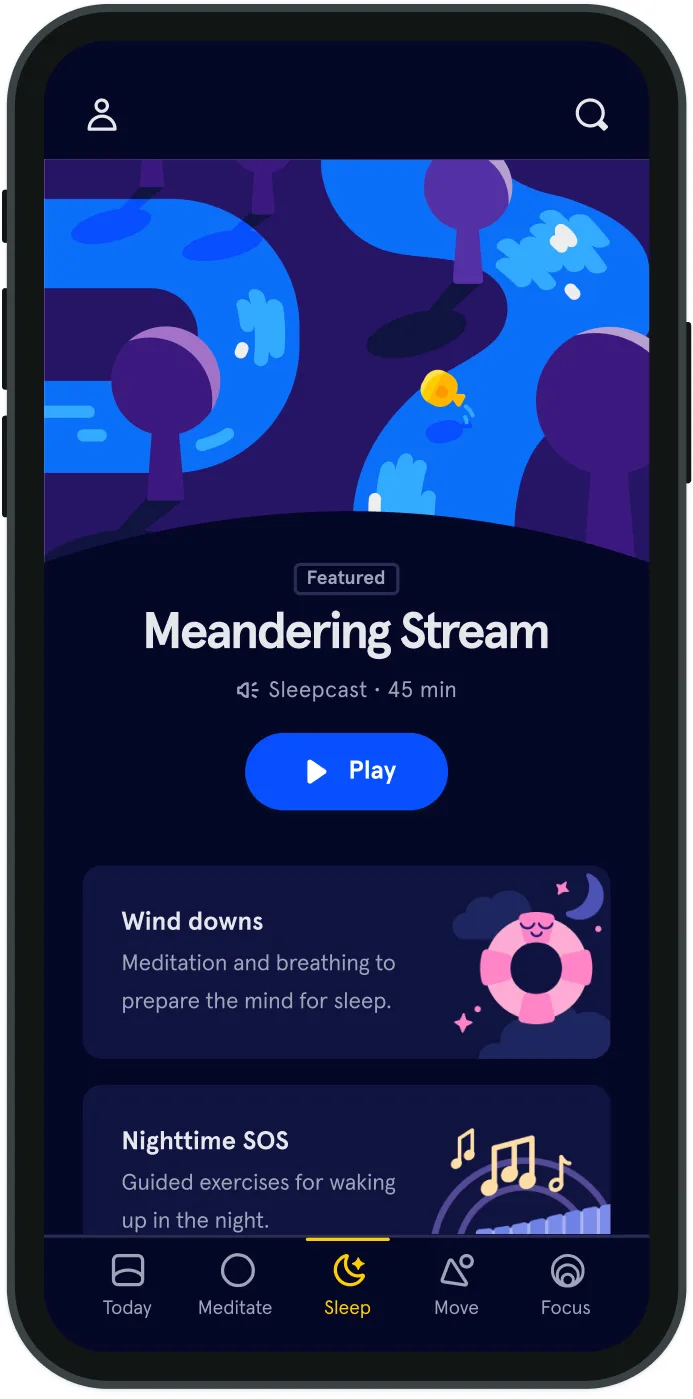Stop feeling burnt out and be more creative. Here’s how.
Have you ever been in a situation where your creative mojo just wasn’t there when you needed it? A crunch-time when you needed an original idea, but just couldn’t summon one? If this type of disengagement becomes a recurring phenomenon, you may have entered a phase called creative burnout_._
As a fashion industry veteran, I have entered this phase more times than I care to remember. Creating clothing line after clothing line, season after season, I began to feel frustrated from searching for a new way to design cutting-edge jeans or rad surf shorts. Facing never-ending deadlines, and in an effort to force out something, I worked long hours without breaks to reach the targets. Ultimately, this became counter-productive as physical and mental exhaustion set in, and my creativity (and motivation) began to dwindle. I was headed straight for complete creative burnout, and desperately needed a way to decompress and re-engage my creative juices. But how? Let’s first take a general look at burnout in the workplace. According to a study in the Annual Review of Psychology, “professional burnout is a prolonged psychological response to job stressors.” It manifests itself in many ways, ranging from physical and emotional fatigue to a lack of enthusiasm for the job involved. Combined, these factors can result in lower job performance and employee turnover. Burnout within creative-specific positions has similar outcomes. Author and speaker Scott Berkun defines creative burnout as “the point where creative energy has been pushed beyond recovery.” “Like a well of water, creative energy replenishes itself slowly over time,” Berkun explains. “A person who has pushed their creative well too hard for too long will, like its watery counterpart, one day find it empty. Usually, by the time you notice something is seriously wrong, there’s little energy left to work with.”
For someone in a creative position, this can be crippling. Burnout can crush productivity and self-esteem. When I experienced this, I attempted to find an immediate solution by changing jobs. But I soon realized that the issue wasn’t my work environment, but instead, my creative well had dried up. So, how can we re-engage and refill? Creativity requires engagement. In “Creativity” by Mihaly Csikszentmihalyi, he contends that when we are drained by too many distractions or demands, we will have trouble activating our creative expression. By eliminating some of the social noise in our heads, we can make room for ideas and gain space for creativity to flow, refilling our well. In a study on the connectivity between creativity and meditation, Roy Horan notes that “learning to self-manage our attention away from these distractions for the intention of self-development is the essence of meditation.” This begs the question: can meditation help with creative burnout? Creativity and meditation have a deep connection—they both seek to go beyond the limited boundaries of our everyday experience. But they both also have another commonality: focus. Csikszentmihalyi points out that creativity is possible only when we can focus our attention on the problem at hand. Meditation, particularly mindfulness meditation, focuses on present surroundings, creating a sense of well-being. This directed attention of mindfulness meditation supports creative, novel thinking by reducing distraction and inducing awareness. So, with regular practice, mindfulness meditation can reduce stress and open the creative pathways to replenish a dry creative well. According to one study, the hardest challenge we face is learning how to create the conditions that will foster a “contemplative silence”; a silence that is the foundation of creative learning and living. These conditions can be established anywhere, as long as we direct our attention mindfully.
A mindfulness meditation practice, as brought into the mainstream by Jon Kabat-Zinn, focuses attention on the breath and body. It can be simplified to a five-minute mindfulness meditation break whenever you are feeling creatively burnt-out, overwhelmed, or stressed. This type of practice, or “break” can provide calm in the midst of anxiety, or when feeling creatively blocked. Reaping the creative benefits of mindfulness meditation does not require seasoned expertise. The first time I tried it was almost accidental. I struggled to design one final short for a European vintage surf brand, an innovative look that encapsulated the fusion of its '70s European roots with a SoCal vibe. It would not come. Design and details had to be handed over within the hour to get samples made for a trade show. I had read briefly about mindfulness meditation but hadn’t yet investigated it fully. I had nothing to lose: I sat on the floor, closed my eyes, and began to inhale and exhale more and more slowly. After about five breaths, I could feel my heartbeat slowing as I let go of thoughts of deadlines and creative blocks. After two minutes of releasing thoughts and connecting to my breath, I flipped through a magazine and discovered the perfect image on a photographed jacket badge. With this inspiration, I incorporated the image, redesigned the shorts, and it became one of our best-sellers. Just a few minutes of practice was enough to infuse a fresh idea that surpassed the wall I initially couldn’t climb. Creative burnout may just have met its match.



Be kind to your mind
- Access the full library of 500+ meditations on everything from stress, to resilience, to compassion
- Put your mind to bed with sleep sounds, music, and wind-down exercises
- Make mindfulness a part of your daily routine with tension-releasing workouts, relaxing yoga, Focus music playlists, and more
Meditation and mindfulness for any mind, any mood, any goal

Stay in the loop
Be the first to get updates on our latest content, special offers, and new features.
By signing up, you’re agreeing to receive marketing emails from Headspace. You can unsubscribe at any time. For more details, check out our Privacy Policy.
- © 2025 Headspace Inc.
- Terms & conditions
- Privacy policy
- Consumer Health Data
- Your privacy choices
- CA Privacy Notice
